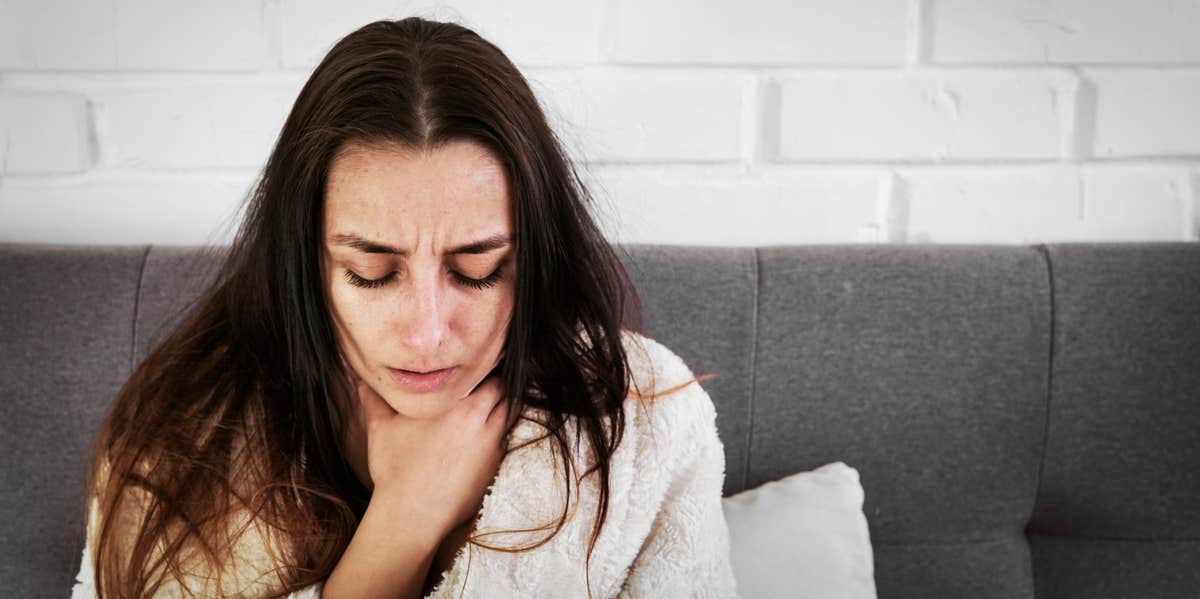Don't Judge Me — My Medical Condition Means I Can't Always Wear A Mask
It’s frustrating and annoying.
 Vyshnova / Shutterstock
Vyshnova / Shutterstock I have metastatic lung cancer.
I was diagnosed in May, thanks to a lemon-sized brain tumor that immobilized my right leg. When they did a scan on me they also discovered cancer in my lungs as well as a spot in my liver.
Thanks to surgery, the brain tumor is gone and I’m walking again.
Because of my lung cancer, I monitor my O2 stats twice a day. I record the numbers in a spreadsheet. Despite the lung cancer and my asthma, I’ve been keeping my O2 levels at a respectable 95%-97% for the last few months. This is in the normal range and is a good sign that I’m keeping the cancer at bay.
Recently, I had pneumonia and despite using nebulizers and medications, my stats hovered between 92%-94% for several days. This level is low enough to be of concern, though not bad enough to send me to the emergency room.
However, when I wear a mask properly, after 20 minutes, I feel faint, and my O2 levels drop to dangerous levels. The last time I tested this at home, they got down to 88%. That is enough to merit a trip to the emergency room.
Today, I was tested at the hospital. I walked with a nurse around the floor, with my mask properly on. After just one and a half rounds (about 2 minutes), my O2 stats had dropped to 90. The nurse was alarmed. Then they hit 89.
Fortunately, after I sat down in one of the treatment rooms, removed the mask, and took some deep breaths, my oxygen levels went back to normal. The nurse and my doctor verified that masks affect my ability to breathe.
My inability to wear a mask for long periods has obvious ramifications.
I avoid most indoor venues. But this isn’t always possible — for example when I need to go to the hospital for tests or treatment. However, hospitals have oxygen tanks. If I am hooked up to oxygen, I can wear a mask safely.
I have talked to my doctor about having portable oxygen, but it’s quite expensive as well as cumbersome. So for right now — I simply avoid situations where I would be required to wear a mask for longer periods.
Unfortunately, neither wearing a mask nor being vaccinated is proof against contracting COVID.
While wearing a mask reduces the spread of disease, it does not totally prevent transmission, particularly if the mask in question is not a properly used medical mask. While vaccines reduce the severity of COVID, they are not a total panacea either, as the latest Omicron variant has struck vaccinated people, according to the World Health Organization (WHO).
One thing people should be doing — if you suspect you have been exposed to COVID or are symptomatic, get tested. There are quick tests available at most pharmacies.
If you have COVID, self-quarantine and inform anyone you’ve come in contact with.
Since the pandemic started, every time I’ve had symptoms, I’ve canceled appointments and isolated until I got test results. So far, I’ve had to do this twice. Each time the results were negative, but out of an abundance of caution, I maintained my quarantine. I also make sure to let people know about my issues, so they can make the choice to stick to Zoom vs. in-person contact if necessary.
It’s important to remember that while masks and vaccines provide some protection, they are not perfect. Other strategies such as keeping social distance are still necessary.
What about those who find it hard to wear face masks?
People with Down Syndrome, for example, often have difficulties wearing masks. Fortunately, there are specially designed sensory masks that they can use that may help them comply with mandates. For people like myself who have breathing issues due to conditions such as asthma, lung disease, etc., it may be necessary to use supplemental oxygen.
For those of us who cannot breathe when we properly wear a mask — it’s frustrating and annoying. We don’t want to be different. It would be preferable to be normal.
No one wants asthma, COPD, Down’s syndrome, lung cancer, or any of the other conditions that make it hard to breathe. COVID adds to the difficulties many people face.
Shefali O'Hara is a cancer survivor, artist, writer, and engineer. Follow her on Medium.

